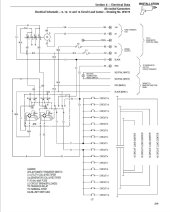Tulex
Solar Wizard
I have a 10K Generac generator ( about 15 years old) at my house. I imaging it is the standard setup, separate panel that is connected to the main panel box. Power for both panels is on when grid is up, ATS engages when generator comes on leaving power to just the generator panel.
We really don't get many long term outages, but we do get quite a few short term or blips, just enough to turn off electronics. So, my goal is to have solar battery back up. Because I can't afford to do a whole house system at this point, I'm looking at 6-12K of solar. Not going huge on the batteries, as I just need short term backup.
My ideal setup is to have the solar batteries cover short term, then if it turns out to be long term, the generator will come on when batteries get too low. Because it's just for short term backup, I would like the solar to go into the grid (well, offset my usage) after batteries are charged. My understanding is that I need a hybrid inverter. From that point, I am lost. Ideally I would like the battery backup to back up the same things as the generator covers. I've looked at a lot of inverters, and see that the sol-ark and outback seem to do what I want to do, but at a price. But, can I connect the solar to the generator panel? Do I have to have a certain type of hybrid? As in, so many call their units hybrids but then say off grid only. Do I have to have full generator pass through? Some say they have a dry contact for generator, some say generator connections, but then I see that it's only for charging.
Any help is appreciated. I am actually quite capable as a DIY, but I also understand that there are a lot of ways to make things work, not all of them are correct or safe.
Thanks
We really don't get many long term outages, but we do get quite a few short term or blips, just enough to turn off electronics. So, my goal is to have solar battery back up. Because I can't afford to do a whole house system at this point, I'm looking at 6-12K of solar. Not going huge on the batteries, as I just need short term backup.
My ideal setup is to have the solar batteries cover short term, then if it turns out to be long term, the generator will come on when batteries get too low. Because it's just for short term backup, I would like the solar to go into the grid (well, offset my usage) after batteries are charged. My understanding is that I need a hybrid inverter. From that point, I am lost. Ideally I would like the battery backup to back up the same things as the generator covers. I've looked at a lot of inverters, and see that the sol-ark and outback seem to do what I want to do, but at a price. But, can I connect the solar to the generator panel? Do I have to have a certain type of hybrid? As in, so many call their units hybrids but then say off grid only. Do I have to have full generator pass through? Some say they have a dry contact for generator, some say generator connections, but then I see that it's only for charging.
Any help is appreciated. I am actually quite capable as a DIY, but I also understand that there are a lot of ways to make things work, not all of them are correct or safe.
Thanks



